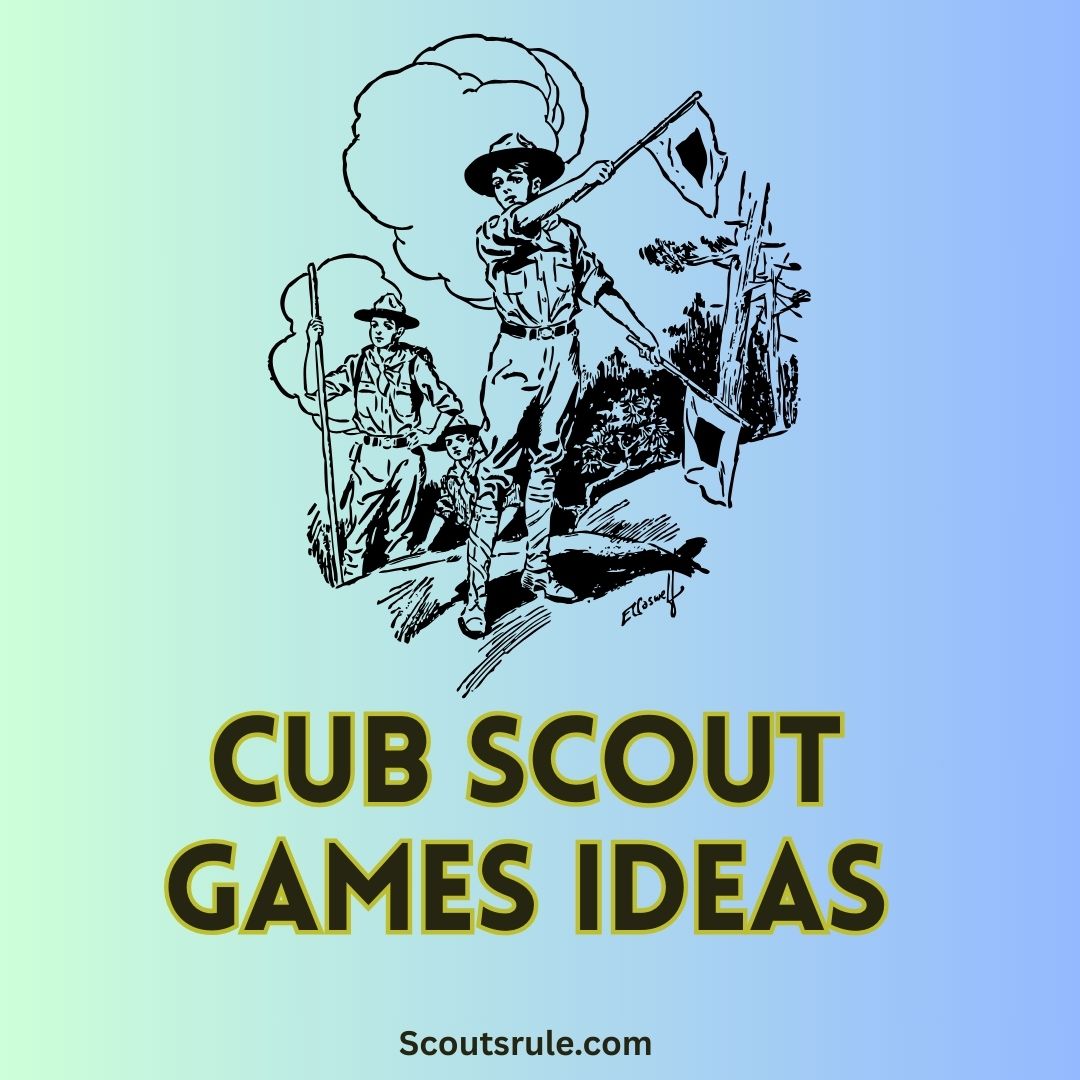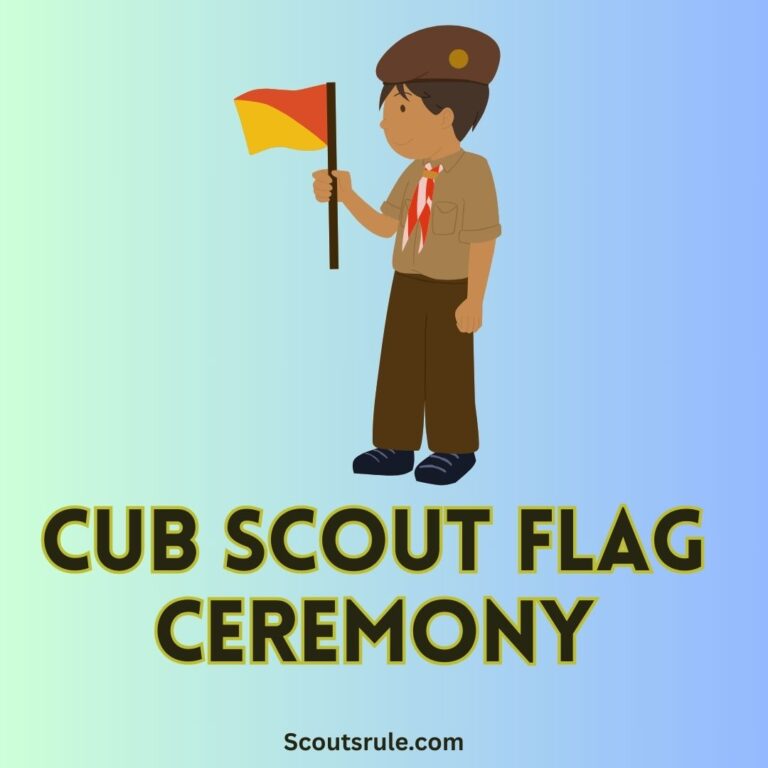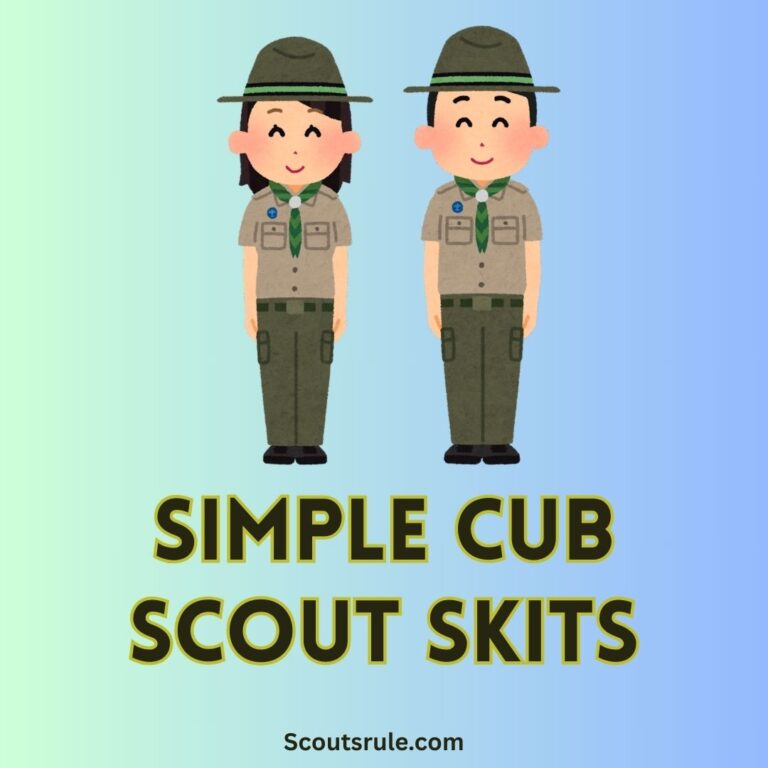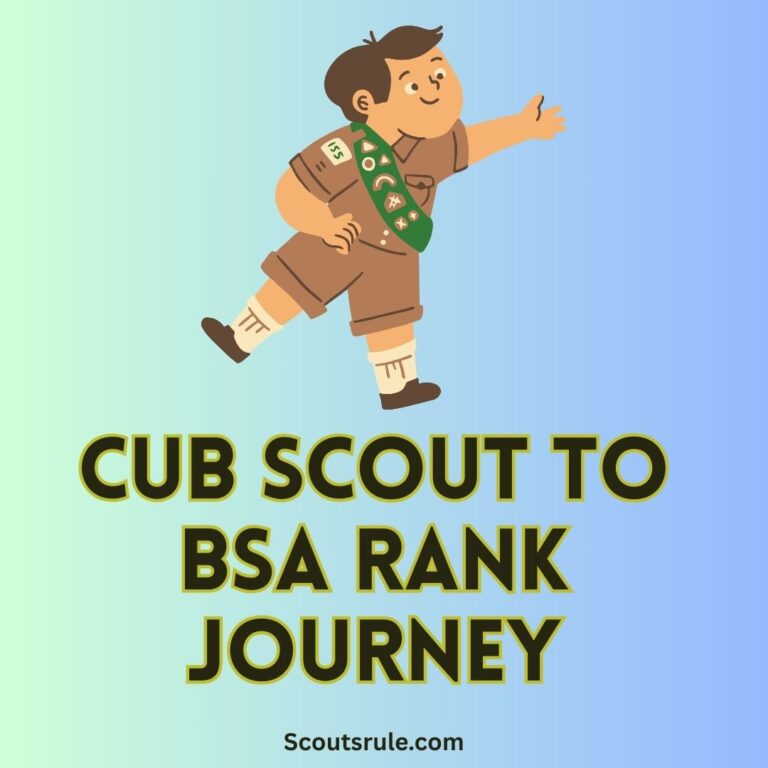
Games are far more than just fun and entertainment for Cub Scouts; they are a dynamic learning tool that builds teamwork, enhances communication, develops problem-solving skills, and promotes physical activity. Whether played indoors on a rainy day or outdoors in open fields, games allow Scouts to socialize and learn important life lessons in a relaxed, supportive environment. In this article, we analyze Cub Scout games—some drawn from previous activities and others from new ideas—and group them into three categories: Indoor Games, Outdoor Games, and Idea Games. We also discuss the benefits of playing these games and conclude with a summary of how they enrich the Scouting experience.
Post Contents
Indoor Games
Indoor games are especially valuable when weather or space constraints compel your den or pack to gather inside. These activities emphasize cognitive skills, coordination, and group dynamics while keeping energy levels high.
1. Musical Chairs
Description & Rules:
Chairs are arranged in a circle or row, one fewer than the number of participants. With lively music playing, Scouts walk around the chairs. When the music stops, everyone must find a seat quickly. The Scout left standing is either “out” for that round or given a fun task before rejoining.
Benefits:
- Improves quick decision-making and spatial awareness.
- Teaches handling loss graciously and encourages perseverance.
2. Simon Says
Description & Rules:
One Scout or leader is chosen as “Simon.” The leader gives commands prefaced with “Simon says…” (for instance, “Simon says, touch your nose”). Scouts must follow only those commands. If a Scout follows a command without the proper phrase, they’re eliminated from that round.
Benefits:
- Sharpens listening skills and attention to detail.
- Reinforces following instructions and quick reactions.
3. Pass the Parcel
Description & Rules:
A small prize is wrapped in multiple layers of paper. While music plays, Scouts pass the parcel in a circle. When the music stops, the Scout holding the parcel removes one wrapper layer. The process repeats until the final layer is unwrapped and reveals the prize.
Benefits:
- Encourages patience, turn-taking, and anticipation.
- Promotes social interaction and fair play.
4. Duck, Duck, Goose
Description & Rules:
Scouts sit in a circle while one child walks around tapping each head while saying “duck.” At a chosen moment, they say “goose” instead. The “goose” rises and chases the tapper around the circle, attempting to tag them before they sit in the vacant spot.
Benefits:
- Develops quick reflexes and agility.
- Encourages a healthy mix of competition and teamwork.
5. Follow the Leader
Description & Rules:
One Scout is designated as the leader and performs simple or silly actions. The rest of the group must follow and imitate every move exactly.
Benefits:
- Reinforces the concept of leadership and imitation.
- Enhances focus, concentration, and coordination.
6. Additional Indoor Games
Below are several creative indoor games that add variety to your meetings:
a. Scout Law Stick Game
Description:
In this game, a “Scout Law Stick” is passed around as each Scout names one of the Scout Law points. If someone hesitates or repeats a point already mentioned, they might receive a fun penalty, such as leading the group in a quick cheer.
Benefits:
- Reinforces knowledge of the Scout Law.
- Promotes cooperative learning and friendly competition.
b. Freeze Dance Game (a variant of Freeze Tag indoors)
Description:
Play energetic music and have Scouts dance freely. When the music stops, they must freeze in place. Anyone caught moving during the freeze stage can perform a fun task (like a quick balancing act) before rejoining.
Benefits:
- Encourages creativity and physical activity indoors.
- Teaches self-control and body awareness.
c. Quicksand Game
Description:
Designate a “quicksand” zone in the room with a marked area. Scouts need to navigate through the area by stepping only on pre-placed mats or objects.
Benefits:
- Enhances problem-solving and strategic movement.
- Builds spatial awareness and careful coordination.
d. Word Game
Description:
Choose a theme (such as “animals” or “colors”), and have Scouts sit in a circle. Each Scout must say a word related to the theme without repeating previous words.
Benefits:
- Boosts vocabulary and cognitive association.
- Develops quick thinking under pressure.
e. Let’s Roll Game
Description:
This game involves rolling a ball or other round object and then quickly naming something (like a type of food, or an animal) before passing it along.
Benefits:
- Promotes creativity and rapid verbal response.
- Encourages cooperative play and laughter.
Outdoor Games
Outdoor games capitalize on open spaces and offer vigorous physical activity along with strategies that develop leadership and teamwork.
7. Treasure Hunt
Description & Rules:
Hide small tokens or clues around a defined outdoor area. Divide Scouts into teams and provide them with a map or a list of hints. They must search for and collect all designated items within a set time frame.
Benefits:
- Develops navigational skills and problem-solving.
- Encourages teamwork and a spirit of adventure.
8. Lava Floor
Description & Rules:
Mark an area as “lava” and designate safe spots (using mats or cushions). Scouts must move from one safe zone to another without stepping on the “lava.”
Benefits:
- Boosts agility and balance.
- Encourages creative pathfinding and group cooperation.
9. Capture the Flag
Description & Rules:
Divide Scouts into two teams with each team hiding a flag in its territory. Players must infiltrate the opposing team’s area, capture their flag, and bring it back without being tagged.
Benefits:
- Promotes strategic planning and teamwork.
- Builds physical fitness and enthusiasm for competitive play.
10. Freeze Tag
Description & Rules:
One child is “it” and tags others, turning them “frozen” until a teammate unfreezes them by crawling between their legs.
Benefits:
- Enhances cardiovascular fitness and coordination.
- Emphasizes camaraderie and mutual support.
11. Red Light, Green Light
Description & Rules:
One Scout acts as the stoplight calling “green light” (allowing players to move) and “red light” (forcing players to freeze). Anyone caught moving during red light returns to the start.
Benefits:
- Develops concentrations and obedience.
- Builds quick reaction skills.
12. Relay Races
Description & Rules:
Organize teams to run or complete a task sequentially, passing a baton or performing a designated challenge along the route.
Benefits:
- Enhances team strategy and physical endurance.
- Offers opportunity for friendly competition and leadership.
13. Obstacle Course Game
Description & Rules:
Set up a course using natural or provided materials (cones, ropes, tunnels) that test agility, coordination, and speed as Scouts navigate various challenges.
Benefits:
- Boosts physical fitness and adaptability.
- Encourages creative problem-solving and persistence.
14. Tug-of-War
Description & Rules:
Two teams grip opposite ends of a rope and pull until one team crosses a pre‑determined line.
Benefits:
- Increases physical strength and collaborative spirit.
- Promotes group strategy and the importance of collective effort.
15. Hula Hoop Relay Race
Description & Rules:
Teams pass a hula hoop along a line without releasing hands. The fastest team wins.
Benefits:
- Develops hand–eye coordination and balance.
- Encourages a fun, competitive atmosphere and teamwork.
16. Water Balloon Toss
Description & Rules:
Pairs toss a water balloon back and forth, gradually increasing the distance. The pair that keeps their balloon intact the longest wins.
Benefits:
- Refreshing on hot days, while promoting coordination and gentle competition.
17. Additional Outdoor Games
Here are five fresh ideas designed specifically for outdoor play:
a. Rattlesnake Game
Description:
Designate a “rattlesnake” area where one Scout or a couple of them (the “rattlesnakes”) hide while others search for them. Once found, catch or tag the “rattlesnake” for extra points.
Benefits:
- Enhances observation and stealth.
- Adds an element of surprise and quick reflexes.
b. Island Rivalry Game
Description:
Divide the outdoor space into “islands” with boundaries marked by ropes. Teams compete to “capture” islands by performing challenges or answering quiz questions, fostering friendly rivalry.
Benefits:
- Encourages team strategy and spatial awareness.
- Boosts morale and group bonding through friendly competition.
c. Ping Pong Air Hockey
Description:
Set up a makeshift air hockey table using a smooth surface, a ping pong ball, and lightweight paddles. Scouts play in teams or individually.
Benefits:
- Enhances hand–eye coordination and reaction time.
- Provides a unique, engaging challenge in an outdoor setting.
d. Spud Game
Description:
A traditional game where one Scout calls out “spud!” and others scramble for position. Typically, it involves running, dodging, and a bit of strategy to avoid being tagged when a spud is called.
Benefits:
- Encourages physical agility and strategic play.
- Fosters teamwork and effective group coordination.
e. Mystery Object Game
Description:
Hide a small object in a designated area and give clues to its location. Teams work together to deduce the hiding spot and retrieve the item.
Benefits:
- Boosts critical thinking and deductive reasoning.
- Reinforces cooperative problem solving and attention to detail.
Idea Games
Idea games stimulate creativity and out-of-the-box thinking. They engage Scouts not only physically but also mentally, inviting them to solve puzzles and reimagine how to use everyday objects.
18. Catch the Dragon’s Tail
Description & Rules:
Form a line with all Scouts holding onto the person ahead; the last Scout in line holds a “tail” (a bandana or cloth). The leader of the line is the “dragon’s head.” The challenge is for the tail to avoid being tagged by the head while maintaining the line.
Benefits:
- Encourages teamwork, as each Scout must work together to keep the formation stable.
- Develops agility and strategic spatial awareness.
19. Telephone Game
Description & Rules:
Scouts sit in a circle, and a whispered message is passed from one person to the next. The final message is compared with the original.
Benefits:
- Enhances listening skills and attention to detail.
- Illustrates the importance of clear communication and teamwork.
20. Tape Tornado Game
Description & Rules:
Place a roll of tape on the ground and outline a circle. Scouts take turns “sweeping” the tape from the center to the perimeter using creative methods (like sliding a small object or using their body).
Benefits:
- Sparks imaginative play and unconventional problem solving.
- Develops fine motor skills and collaborative fun.
21. Jigsaw Challenge
Description & Rules:
Break a simple picture into puzzle pieces, distribute them among teams, and have them race to reassemble the picture correctly.
Benefits:
- Promotes critical thinking and teamwork.
- Reinforces pattern recognition, attention to detail, and problem solving.
22. Minute to Win It Challenges (Bonus Variation)
Description & Rules:
Organize rapid-fire, one‑minute challenges that test various quick skills, such as stacking cups or transferring small objects.
Benefits:
- Enhances quick decision-making and time management.
- Encourages friendly competition and creative strategy.
Benefits of Playing Cub Scout Games
Cub Scout games, whether indoor, outdoor, or idea-driven, offer immense benefits:
- Teamwork and Cooperation:
Playing in groups helps Scouts build trust, learn how to work together, and appreciate each person’s contribution. - Physical Fitness:
Many games require moving, running, or balancing, which increases cardiovascular health, motor skills, and overall physical well-being. - Cognitive Development:
Games that require puzzles, critical thinking, or strategy improve mental agility, problem solving, and memory. - Social Skills:
Group activities promote respectful communication, empathy, and leadership—traits that are essential for academic and personal success. - Emotional Resilience:
Facing challenges in a playful environment helps Scouts learn how to handle setbacks, build confidence, and develop a positive outlook. - Creativity and Imagination:
Idea games, in particular, spark innovation, encourage creative problem solving, and let Scouts experience the joy of breaking from routine.
Conclusion
Cub Scout games are a multifaceted tool that not only entertains but also educates and motivates. By combining indoor activities that sharpen quick thinking with outdoors games that boost physical prowess and idea games that spark creativity, you create an enriching environment for learning and growth. Whether through an energetic relay race under the sun or a thoughtful scurry to decode a mystery object clue, these games build life skills that extend well beyond the playground.
Integrating a mix of traditional favorites—like Red Light, Green Light, Musical Chairs, and Treasure Hunts—with fresh additions such as Catch the Dragon’s Tail, Tape Tornado, and Island Rivalry, leaders can create dynamic sessions that keep every Cub Scout engaged. In doing so, you nurture teamwork, communication, and leadership, providing the building blocks for future success in Scouting and beyond.
Embrace these activities, celebrate the laughter and lessons they bring, and see firsthand how play enriches every aspect of a Scout’s journey. The benefits are lasting: improved physical health, enhanced critical thinking, stronger relationships—and, most importantly, a happy, confident community of young leaders ready to take on the world.

Hi, Robin here, A former lead Scout and here I share my inspiring stories about USA Scouts, leadership, adventure, how to guides and more.






